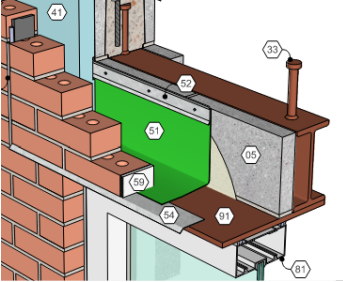Scott W. Walkowicz and W. Mark McGinley
i Owner, Walkowicz Consulting Engineers, LLC, East Lansing, MI, USA, scott@walkowiczce.com
ii Professor and Endowed Chair for Infrastructure Research, Civil and Environmental Engineering, University of Louisville, KY, USA, m.mcginley@louisville.edu
ABSTRACT
Masonry veneer lintel design and detailing continues to be challenging for designers. Methods to economize loose lintel design have been previously studied and published but these methods have not been widely implemented. In addition, increasing cavity widths have created varying design solutions for masonry veneer openings and the design assumptions that designers must make regarding system behavior. Lintel designs may include heavy bolted angles or plated beam lintels that often lead to expensive detailing for both the lintel capacity requirements and cavity closures. This paper discusses how these systems typically behave and the range of design options that include reinforced and unreinforced brick veneer lintels. Detailed discussion of how to implement these system designs will be presented. Also presented will be options for providing cavity closure for commercial and residential window/door/louver assemblies when using veneer beam lintels.
KEYWORDS: Veneer, loose lintel, brick lintel, reinforced, unreinforced, wide-cavity, cavity closure.
008-McGinley.pdf



